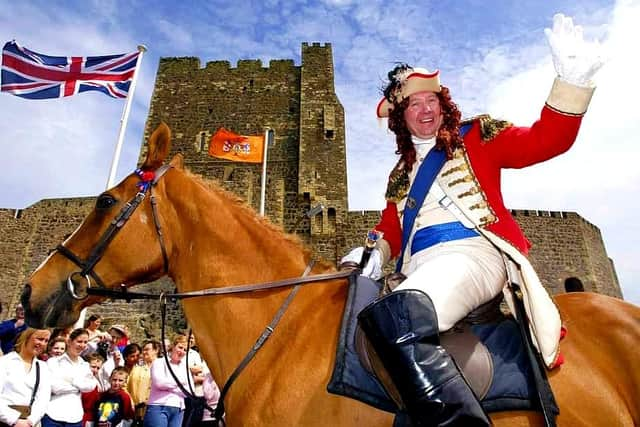Major parade: Huge significance of William of Orange's landing in Northern Ireland 'not fully appreciated outside of Carrickfergus' as town gets set for pageant
and live on Freeview channel 276
That is the suggestion of Ulster historian Gordon Lucy, speaking ahead of a huge pageant on Saturday to commemorate the occasion, complete with band parades, entertainment, and re-enactments.
Some 29 bands are listed as taking part on the day, though it is understood the actual number may be slightly higher (list here).
Advertisement
Hide AdAdvertisement
Hide AdThe celebrations begin from 10am and continue through to the late afternoon (full details below).


The actual landing itself happened on June 14, 1690, and Mr Lucy said it would be fair to describe it as the beginning of the end for the Jacobites – the supporters of James II.
James was the Catholic king of the British Isles (who believed he had a divine right to rule), and had landed in Ireland in 1689 to muster support in a bid to regain his title from Protestant rival William (who had been offered the throne by parliament).
William followed James, preceded by his commander Frederick Schomberg, and the showdown between the two would-be kings led to the Battle of Boyne in July of 1690.
But why did William land in Carrick – not somewhere else?
Advertisement
Hide AdAdvertisement
Hide Ad"Carrickfergus was a much more significant place in the 17th centuy than Belfast," he said.
"In fact Belfast Lough was actually called Carrickfergus Lough; Belfast was just a fairly non-descript village.
"Carrick was probably the most significant place in Ulster. The reason why Schomberg didn't land the previous year in Carrick was it was under Jacobite control.
"There was a siege, and Schomberg actually manages to chase them out, so it was an option [by the time William set sail].
Advertisement
Hide AdAdvertisement
Hide Ad"William was seen by Ulster Protestants, and perhaps Irish Protestants as a whole, as a liberator, so the idea of him arriving to extricate themselves from the horrendous mess they were in would've been very, very welcome indeed."
That isn't to say that the Williamite Army were religious puritans.
"William's famous Dutch Blue Guards – a sort of personal bodyguard who had a tremendous affection for him, and he for them – were significantly Roman Catholic in their composition," said Mr Lucy.
The Catholic contingent in his army would have numbered "at least hundreds", while there were also Irish Protestants who backed James II.
Advertisement
Hide AdAdvertisement
Hide Ad"It honestly is worthy of celebration – it honestly is," said Mr Lucy of the king William's arrival in the town.
"Outside of Carrickfergus I suspect it isn't properly celebrated, commemorated, or its significance appreciated."
Re-enactment groups, kids’ entertainment, and musicians will be by Carrick Castle from 11am on Saturday.
Fife and drum musicians will be performing by Bell’s newsagent from 10am.
Advertisement
Hide AdAdvertisement
Hide AdThe parade begins at 12.30pm from Woodburn Playing Fields to the harbour, where ‘King Billy’ will come ashore at 1.30pm.
From about 2pm the parade will go to Marine Gardens, wait, then head back to Woodburn at 4.15pm.